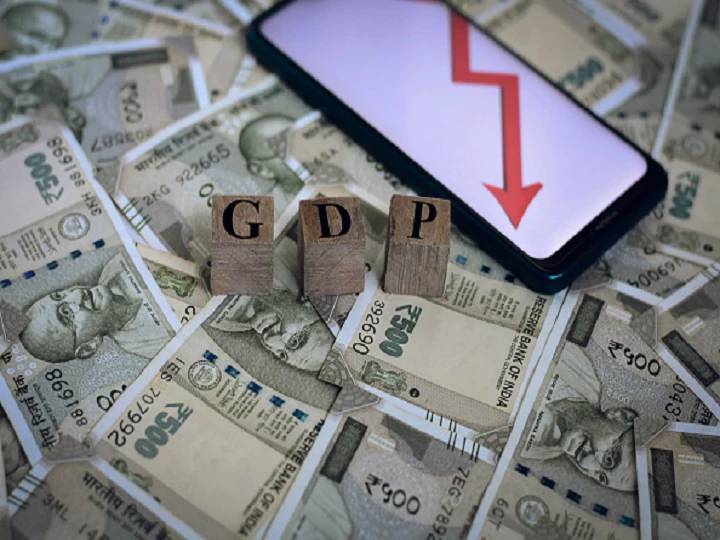India’s economy has formally entered in a technical recession for the first time in history as the GOI announced that country’s Gross Domestic Product (GDP) for the second quarter has shrunk by 7.5 percent. This is the second time in the current fiscal year when the country’s GDP has fallen. In the first quarter which is April-June period, it had contracted by 23.9 percent, the steepest fall ever.
As per the released estimates of GDP by the National Statistical Office (NSO), Ministry of Statistics and Programme Implementation, it has been found that for the second quarter (July-September) Q2 of 2020-21, both at Constant (2011-12) and Current Prices “GDP at Constant (2011-12) Prices in Q2 of 2020-21 is estimated at ₹ 33.14 lakh crore, as against ₹ 35.84 lakh crore in Q2 of 2019-20”, showing a contraction of 7.5 percent as compared to 4.4 percent growth in Q2 2019-20. Quarterly GVA at Basic Prices at Constant (2011-12) Prices for Q2 of 2020-21 is estimated at ₹30.49 lakh crore, as against ₹ 32.78 lakh crore in Q2 of 2019-20, showing a contraction of 7.0 percent.
GDP at Current Prices for Q2 2020-21 is estimated at ₹ 47.22 lakh crore, as against ₹ 49.21 lakh crore in Q2 2019-20, showing a contraction of 4.0 percent as compared to 5.9 percent growth in Q2 2019-20.
India’s Economy had struggled to grow way earlier than the pandemic had hit. The Covid19 had halted economic activity worldwide and India with an already dismally performing economy saw one of the world’s strictest lockdowns implemented which gave a heavy blow to the creeping economy. The shutdown within a huge country of 1.3 billion humans left a large number of people jobless nearly overnight, which included tens of millions of migrant workers who were left in a dystopic lurch.
A report of Oxford Economics launched in the early weeks of this month stated that India will be the worst-affected economy even after the pandemic related restrictions are eased out. The GDP recorded the steepest fall in more than forty years in June because of lockdown measures.
Despite the measures to stem the pandemic, the country is now home to the second-highest Covid-19 infections after the U.S. at 9.3 million cases. The second straight quarterly decline in GDP pushes Asia’s third-largest economy into its first technical recession in records.
Financial and real estate services, among the biggest component of India’s dominant services sector, shrank 8.1% last quarter from a year ago, while trade, hotels, transport, and communication declined 15.6%. Manufacturing gained 0.6%, electricity and gas expanded 4.4% and agriculture grew by 3.4%. Most economists tend to agree with the definition used by the National Bureau of Economic Research in the US which states that ‘during a recession, a significant decline in economic activity spreads across the economy and can last from a few months to more than a year.’
Economic analysts tend to consider a recession a technical one when the contraction in the value of economic activity persists for, at least, two consecutive quarters as currently witnessed in the case of the Indian economy. India, technically, entered into a recession at the start of October. The UK has been in a recession for three consecutive quarters. In fact, most economies are in a recession. Among the largest economies in the world, only China, where the outbreak originated from, has managed to find some success in bringing its economy back on track.
There is a general consensus that the duration of the current recession will hinge primarily on how successfully India will be able to stop the spread of COVID-19. A failure to do so may warrant the implementation of further partial or complete lockdowns that are only likely to paralyze economic activity once again. The early deployment of an approved vaccine will also play a critical role in India’s economic recovery.
Partha Ray, a professor of economics at Indian Institute of Management (IIM) Calcutta elucidated, “The RBI had rightly highlighted the state of a technical recession in India, implying two consecutive quarters of negative growth during April-September 2020. Instead of waiting for a long time for the data to come, this exercise, known as nowcasting, is based on a state-of-the-art analysis of recent 27 monthly indicators such as automobile sales and domestic air cargo. It also covers some global indicators like US industrial production. While this is a confirmation of the already anticipated bad news, it remains to be seen how far do these indicators fare for the second half of the financial year 2020-21.”





